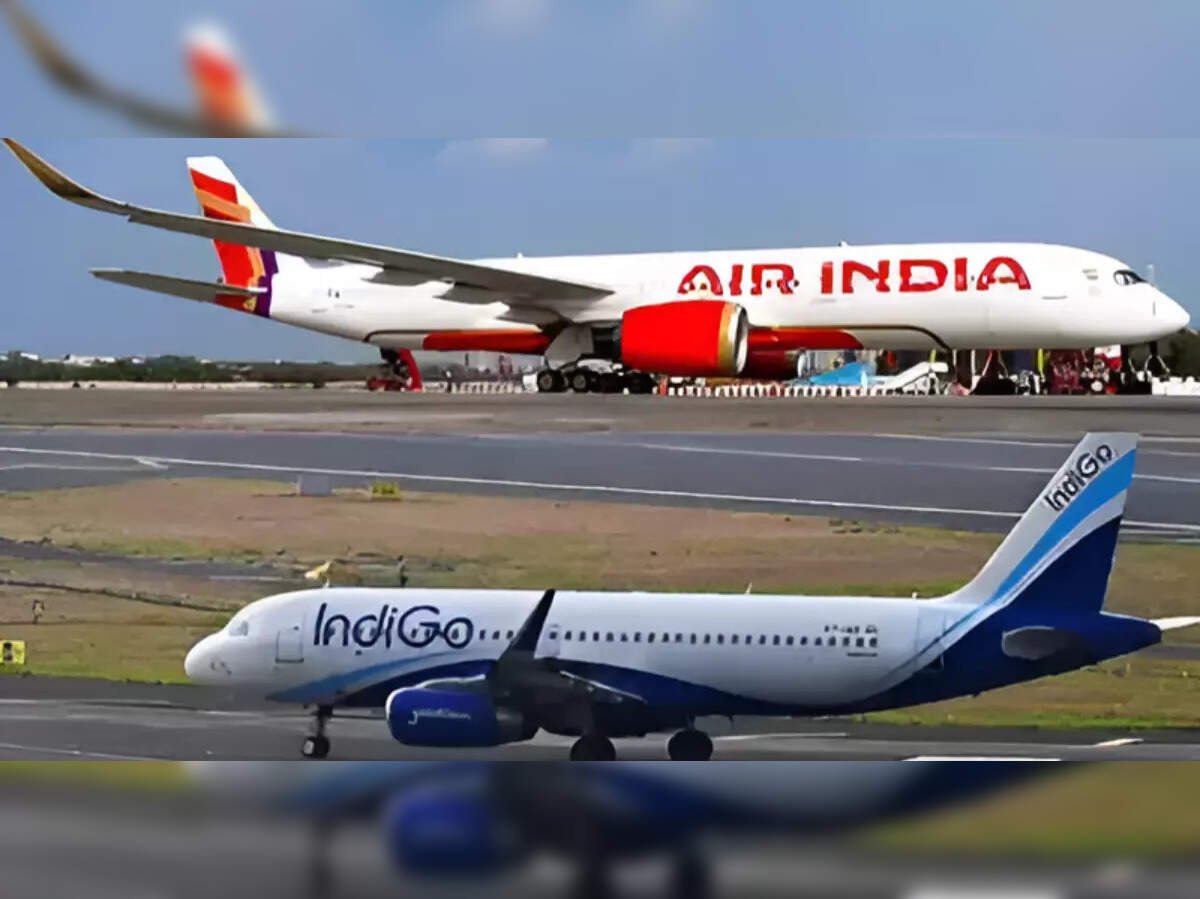Travel Guides & Articles
Canada, UK, US, Germany, France, China, India, Japan and More Accelerate Domestic Tourism Boom with Strategic Campaigns, Middle-Class Growth, and Nature-Focused Travel

Saturday, July 19, 2025
Canada, UK, US, Germany, France, China, India, Japan, and More Increasing domestic tourism has surged in the age of strategic government campaigns, the growing middle-class, and interest in nature tourism. Governments in these nations have rolled out targeted programs to encourage domestic tourism, from marketing campaigns to incentives and investments in infrastructure to make local travel more attractive. And secondly, increasing disposable incomes in much of the world has resulted in more of the population having the cash to spend on domestic travel experiences. This latter trend also has been reinforced by a growing interest in nature-based tourism, with consumers wanting ecologically friendly and sustainable holiday possibilities that focus on the natural resources within their national borders. As a result, domestic tourism has not only become an economic linchpin but it has also evolved into a harbinger of the future of how people travel and experience their own countries.
Domestic tourism, that which residents travel within their own country, has become central to the financial, social, and support fabric of most countries across the globe. With the world of tourism adapting to the “new normal” post-pandemic, the trend of exploring homegrown jewels has grown exponentially. Once considered the second-choice option to vacationing overseas, staycations are undergoing a resurgence never before seen, driven by changing consumer habits, rising government backing and mounting demand for sustainable travel.
A Rapidly Expanding Market Anchored in Local Travel
In recent years, the domestic tourism sector has transformed into a multi-trillion-dollar industry. Estimates suggest that the global domestic tourism market is on track to reach approximately \$6,736.1 billion by 2030, expanding at a compound annual growth rate (CAGR) of 13.4% from 2021 to 2030. This growth trajectory underscores a permanent shift in traveler preferences, where local adventures and culturally immersive experiences within one’s own borders are replacing long-haul international trips.
The global health crisis acted as a major catalyst for this transition. With borders closed and safety concerns on the rise, millions turned to their own countries for getaways, road trips, and nature-based holidays. Now, even as international travel resumes, many are continuing to explore domestically, drawn by the convenience, affordability, and familiarity it offers.
Regional Dynamics Driving Domestic Travel Trends
Across the globe, domestic tourism is reshaping national economies and redefining travel priorities:
North America:
In the United States and Canada, domestic tourism thrives on access to iconic national parks, coastal towns, mountainous retreats, and urban escapes. Travelers continue to explore cultural institutions, local heritage sites, and emerging rural destinations. The pandemic encouraged more Americans and Canadians to discover their own backyard, creating a strong foundation for sustained growth.
Europe:
Nations like Germany, France, Italy, and the UK benefit from deeply rooted heritage tourism. Weekend getaways, culinary tours, and seasonal festivals drive consistent movement across regions. The continent’s extensive rail and road infrastructure makes domestic travel accessible and convenient for both short and extended stays.
Asia-Pacific:
This region is witnessing an explosive boom in domestic travel. In China, high-speed rail, expansive hotel chains, and government promotions fuel mass movement to inland cities, cultural towns, and coastal hubs. India, with its rich diversity, is encouraging state-level tourism circuits and staycations. Japan’s rural revitalization efforts and local hospitality experiences are also drawing more domestic visitors than ever before.
Latin America and Africa:
Although infrastructure challenges persist, both regions are seeing a surge in homegrown travel. National parks, beaches, historical towns, and community-led tourism initiatives are drawing local explorers. As governments invest in road connectivity and hospitality training, domestic tourism is expected to play a larger role in their GDPs.
Key Drivers Behind the Domestic Travel Boom
Several pivotal factors are reinforcing the domestic tourism boom across regions:
1. Pandemic-Induced Travel Habits
The COVID-19 pandemic introduced a global rethink in travel behavior. Staycations, road trips, and local adventures became the new norm. Fear of exposure, restrictions on air travel, and a newfound appreciation for nearby destinations drove millions to look inward for exploration. This shift persists as travelers now value the simplicity and safety of local travel.
2. Rising Disposable Incomes and Middle-Class Growth
In emerging markets especially, the rise in disposable income and expansion of the middle class are encouraging more frequent domestic travel. People are now allocating larger portions of their income to leisure, fueling demand for hotels, resorts, and local experiences.
3. Government Campaigns and Policy Support
Governments around the world are actively promoting domestic travel to offset the volatile nature of international tourism. Strategic campaigns, travel vouchers, tax rebates, and public-private tourism partnerships are helping bolster local economies. Infrastructure developments, such as highway expansions, upgraded rail systems, and digital tourism portals, are also enhancing the domestic travel experience.
4. Eco-Tourism and Sustainable Choices
Travelers are increasingly conscious of their environmental footprint. As a result, domestic travel is being aligned with eco-tourism goals—promoting visits to national parks, nature reserves, and heritage sites. The preference for responsible travel—supporting local communities, minimizing emissions, and respecting ecosystems—is pushing domestic tourism into a greener direction.
Ongoing Challenges Facing the Domestic Tourism Sector
Despite its strong momentum, domestic tourism is not without its obstacles:
Seasonal Fluctuations:
Domestic travel often depends heavily on seasons, public holidays, and school vacations. This can lead to overcrowding during peak times and underutilization of facilities during off-peak months, straining both infrastructure and service delivery.
Infrastructure Gaps in Developing Nations:
While developed countries enjoy extensive travel networks and high-quality accommodations, many emerging economies still face roadblocks. Poor transport connectivity, limited hotel inventory, and lack of tourist amenities can limit the reach of domestic tourism in rural and remote areas.
Continued Attraction to International Travel:
Even with the rise in domestic interest, the allure of international destinations remains strong. Exotic locations, cultural novelty, and perceived value sometimes make overseas travel more attractive, especially when airfare deals narrow the price gap. Maintaining the appeal of domestic offerings requires ongoing investment in innovation, marketing, and service quality.
Looking Ahead
The domestic tourism industry is at a cross-road, with more potential to expand and diversify than ever before. All countries around the world have seen how critical it is to them during the recent global upheavals. As governments, private companies and even travelers themselves increasingly invest in local travel, the industry is set to grow out of its conventional bounds.
Smart infrastructure, digital transformation, all-encompassing policies, and sustainable development models, will be characterizing the domestic tourism in the following years. With growing exposure and more experienced travelers, the outlook for domestic tourism is optimistic based on the known, but inspired by creativity and discovery.
Download 𝐭𝐡𝐢𝐬 𝐑𝐞𝐩𝐨𝐫𝐭 @ https://www.alliedmarketresearch.com/checkout-final/133db56f811fbf20146a1e91b8decb42
Travel Guides & Articles
India arranges additional flights to help stranded passengers from Kathmandu amid Gen-Z protests in Nepal

“With the opening of the airport operation in Kathmandu, @MoCA_GoI, in coordination with Air India & IndiGo, has arranged additional flights this evening & over the next few days, alongside scheduled services resuming tomorrow. Airlines have been advised to keep their fares within reasonable levels,” Civil Aviation Minister Kinjarapu Rammohan Naidu posted on X.
Hundreds of Indians had been unable to return home as Tribhuvan International Airport suspended operations when youth-led demonstrations spilled into the streets of Kathmandu, disrupting public life and raising safety concerns. The swift mobilisation of flights is aimed at clearing the backlog while keeping fares in check.
Air India mounted special services to clear the backlog. “Air India is operating special flights today and tomorrow from Delhi to Kathmandu and back to help passengers who have been stranded due to the recent developments in Nepal. Our scheduled operations will also resume from tomorrow,” the airline said, adding it was working with government agencies to facilitate travel.
Nepal has been gripped by unprecedented youth-driven demonstrations over unemployment, political corruption and disenchantment with traditional parties. The unrest has paralysed daily life in Kathmandu, forced a temporary airport shutdown and heightened concerns in the region about instability in the Himalayan nation.
The Ministry of External Affairs (MEA) issued a stark advisory asking Indians to defer travel until stability returns. “Indian citizens presently in Nepal are advised to shelter in their current places of residence, avoid going out onto the streets and exercise all due caution. They are also advised to follow local safety advisories from Nepal authorities as well as the Embassy of India in Kathmandu,” the MEA said.
IndiGo confirmed it had resumed flights. “Flight operations to and from #Kathmandu have now resumed… We sincerely appreciate your patience and understanding and remain committed to ensuring safe and smooth journeys,” the airline said.
Authorities in Delhi are also monitoring ticket prices to ensure airlines do not exploit the crisis as Nepal’s protests show no signs of abating.
Travel Guides & Articles
9 incredible places in India where you can watch sea turtles nest – Times of India
Travel Guides & Articles
Air India and Air Astana sign codeshare agreement to boost India–Kazakhstan connectivity

Air India and Air Astana, the flag carrier of Kazakhstan, have signed a new codeshare agreement to offer more flight options to travellers.
The codeshare partnership enables cooperation between the two carriers on trunk routes between Kazakhstan and India, covering Air Astana routes operated between Almaty and Delhi, and Almaty and Mumbai. With this, Air India will place its ‘AI’ designator code on Air Astana’s flights to and from India, providing its customers convenient access to Almaty, a rapidly growing tourism and business hub in Central Asia.
Air India customers travelling to Almaty from points beyond Delhi and Mumbai will be able to conveniently travel on a single ticket and check-in their baggage through to Almaty at the point of origin.
Campbell Wilson, Chief Executive Officer & Managing Director, Air India, said “Our new codeshare partnership with Air Astana creates stronger air links to Kazakhstan, a fast-growing market with immense potential for tourism. Beyond serving leisure travel demand, our partnership will also support trade and cultural exchanges between our two countries, while bringing a new destination in Central Asia closer to our customers.”
Peter Foster, the Air Astana Group’s Chief Executive Officer, commented on the codeshare with Air India, “We are delighted to have concluded a comprehensive code share agreement with Asia’s oldest airline. Air India is an exceptionally well-managed business, which operates a comprehensive network of flights to, from and across India, the world’s most populous country and one of the fastest growing travel markets. India is of key strategic importance to the Air Astana Group as we increase flights from Kazakhstan to Delhi, Mumbai and Goa. The code share will accelerate the increasingly strong business, tourist and student traffic flows between our two countries”.
The new arrangement builds on an existing interline partnership between Air India and Air Astana that came into effect earlier in 2025. Under the interline agreement, Air India customers already have convenient connections via Almaty to multiple destinations across Central Asia and China including Astana (Kazakhstan), Bishkek (Kyrgyzstan), Tashkent (Uzbekistan), Dushanbe (Tajikistan) and Urumqi (China). Air Astana enjoys access to 18 destinations across Air India’s domestic network and 9 international destinations via Delhi and Mumbai.
With this step-up to a codeshare agreement, travel between India and Kazakhstan becomes more convenient for customers while also opening a wider network of destinations through a single booking and check-in process.
Subject to regulatory approvals, the codeshare flights will be progressively made available for sale across Air India’s booking channels, including the airline’s official website, mobile app, and through travel agents worldwide.
-

 Business2 weeks ago
Business2 weeks agoThe Guardian view on Trump and the Fed: independence is no substitute for accountability | Editorial
-
Tools & Platforms4 weeks ago
Building Trust in Military AI Starts with Opening the Black Box – War on the Rocks
-

 Ethics & Policy2 months ago
Ethics & Policy2 months agoSDAIA Supports Saudi Arabia’s Leadership in Shaping Global AI Ethics, Policy, and Research – وكالة الأنباء السعودية
-

 Events & Conferences4 months ago
Events & Conferences4 months agoJourney to 1000 models: Scaling Instagram’s recommendation system
-

 Jobs & Careers2 months ago
Jobs & Careers2 months agoMumbai-based Perplexity Alternative Has 60k+ Users Without Funding
-

 Podcasts & Talks2 months ago
Podcasts & Talks2 months agoHappy 4th of July! 🎆 Made with Veo 3 in Gemini
-

 Education2 months ago
Education2 months agoMacron says UK and France have duty to tackle illegal migration ‘with humanity, solidarity and firmness’ – UK politics live | Politics
-

 Education2 months ago
Education2 months agoVEX Robotics launches AI-powered classroom robotics system
-

 Funding & Business2 months ago
Funding & Business2 months agoKayak and Expedia race to build AI travel agents that turn social posts into itineraries
-

 Podcasts & Talks2 months ago
Podcasts & Talks2 months agoOpenAI 🤝 @teamganassi






















